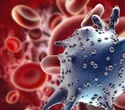PhosAgro/ UNESCO/ IUPAC Partnership in Green Chemistry for Life
Green chemistry has become a focus for cutting-edge research into sustainable technologies. These technologies may reduce or even eliminate the production and use of hazardous substances in mining and in the design, manufacture and application of chemical products, and may also lead to energy savings, a better environment and improved human health.

Shutterstock.com
Last update:13 February 2024
Research in green chemistry and associated areas in biochemistry, geochemistry, biotechnology, ecology and healthcare give young scientists ample opportunity to demonstrate their inventiveness and provide important input to sustainable development. With this in mind, the Green Chemistry for Life project was launched in 2013 by UNESCO’s International Basic Sciences Programme (IBSP) and PhosAgro, the largest producer of phosphate-based fertilizer in Europe, in close cooperation with the International Union of Pure and Applied Chemistry (IUPAC).
Objectives
PhosAgro/UNESCO/IUPAC research grants in green chemistry programme offers research grants of up to US$30,000 each to scientists aged 39 or under, for innovative research projects that respect the 12 principles of green chemistry, to assist them in implementing their work.
In addition to seeking to harness the talents of young scientists and the fruits of their research for the advancement of green chemistry. The programme sets out to raise awareness among decision- and policy-makers, industrialists and the public at large of the great opportunities green chemistry offers in contributing to address the multitude of pressing societal needs.
12 Principles of Green Chemistry
Prevention of waste to avoid treating or cleaning up waste after it has been created;
Atom economy through new synthetic methods designed to maximize the incorporation of all materials used in the process into the final product;
Less hazardous chemical syntheses designed to use and generate substances that possess little or no toxicity to human health and the environment;
Design of safer chemicals able to carry out the desired function while minimizing their toxicity;
Avoiding wherever possible or minimizing the use of auxiliary substances (e.g. solvents, separation agents, and others), and introducing safer solvents and auxiliaries that are innocuous when they have to be used;
Design for energy efficiency of chemical processes to minimize their environmental and economic impacts and if possible, to introduce synthetic methods to be conducted at ambient temperature and pressure;
Promotion of the use of renewable raw materials or feedstock instead of depleting ones whenever technically and economically practicable;
Reduce derivatives through minimizing or avoiding the use of blocking groups, protection/deprotection, and temporary modification of physical/chemical processes that require additional reagents and can generate waste;
Catalytic reagents as selective as possible;
Design for degradation of chemical products at the end of their function into innocuous degradation products not persisting in the environment;
The development of analytical methodologies needed to allow real-time analysis for pollution prevention, in-process monitoring and control prior to the formation of hazardous substances; and
Inherently safer chemistry for accident prevention substances and the form of a substance used in a chemical process to be chosen to minimize the potential for chemical accidents, including releases, explosions, and fires.



Comments
Post a Comment